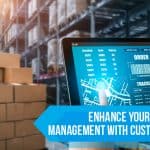Category: Digital Transformation
4 Top Reasons for Organizations to Move to Python 3
Python is one of the most widely used programming languages on the planet. Over the years programmers have fallen in love with Python for its increased productivity and capabilities. However, a constant argument persists on whether Python 3 is better than Python 2 and would it be a wiser decision to completely shift to Python 3.
Although Python 3 has been in existence for over 7 years, programmers are quite skeptical about using it. Most programmers tend to cling to Python 2, completely ignoring the capabilities of the new version.
This blog will walk you through some major drawbacks of Python 2 and will pinpoint 4 top reasons on why to choose Python 3 over Python 2.
Why Is Python 3 On The Rise?
Before we dive deeper into the major advantages of Python 3, let’s take a look at its origin.
Released in 2008, Python 3 was introduced to overcome the flaws of Python 2. The major reason behind developing Python 3 was to clean up the codebase and remove redundancy. Although Python 3 is the newer version of Python, it is not necessarily backward compatible with code written in the 2.x version.
Significant features of Python 3 makes it simpler, easier and incredibly efficient to use. Here’s listing the major differences between Python version 3.0 and 2.0, and the reasons why Python 3 can make a better programming partner.
1. Unicode Character Encoding
As mentioned earlier, Python 3 was introduced to address the vulnerabilities and drawbacks of Python 2. Hence, it reduces the complexities of coding and improves speed and performance.
Where in Python 2 the character encoding is done in ASCII format, Python 3 is Unicode based. In Python 2 the strings are by default stored in the form of ASCII values. Programmers are required to add ‘u’, to store strings specifically in Unicode format. In Python 3 strings are stored in UTF-8 format, enabling a large number of storage features such as character value storage, different language characters, and emojis storage as well.
Dropped deprecated features which were frequent sources of bugs in Python 2 have also been replaced by superior alternatives and retained solely for backward compatibility.
For instance: If a file is created by олга with non-ASCII characters in the name, for the below-mentioned code, if you are using Python 2 your code is sure to throw an error 500.
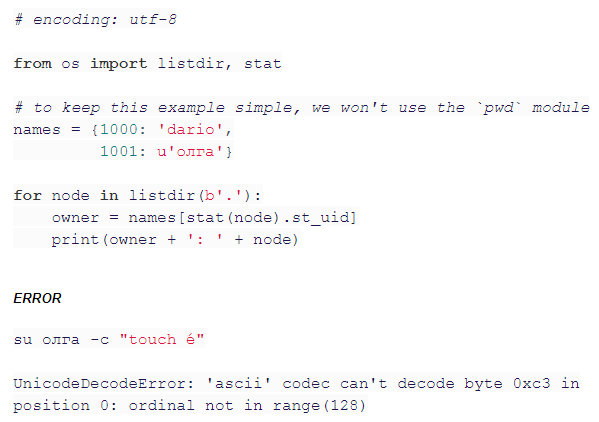
However, in Python 3 your error will be detected right away saving you the time on long code creation. Moreover, the error message is much easier to understand. Knowing that str object is owner and node is a bytes object, it is easy to recognize that the error is due to listdir returning a list of bytes objects.
![]()
Adding listdir(‘.’) would make the bug disappear as this would appear as a Unicode string in Python 3.
The difference in the behavior is due to the difference in how each version handles the string type. Whatever is lumped together in Python 2 is split in Python 3.
2. Improved Library Standards
When it comes to libraries, there is a huge difference between the two versions. Many libraries developed in Python 2 are not forward compatible. Hence, the new 3.x version is developed focusing on providing good compatibility. Moreover, most of the actively maintained libraries are strictly created for use with Python 3. Hence, it’s suggested to keep codes compatible with Python 3 to help keep your test running on both versions.
3. Improved Integer Division
Reducing a programmer’s confusion and frustration, Python 3 is created with a syntax that’s more intuitive. Python 3.x version has an elegantly designed structure that allows performing an action with fewer lines of code. Python 2, on the other hand, requires the exact input to perform a particular result or generate the expected results.
For instance: If you try a simple calculation like 5/2 (5 divided by 2), Python 2, after rounding up would give you the result as 2. To derive the exact result, that is 2.5, the input should be 5.0/2.0.
Whereas, Python 3 would right away, give you the answer 2.5 for the input 5/2, without converting the numbers to float data type.
4. End of Python 2 Support
Yes! Python 2 is expected to stop all support and maintenance by January 2020. Now, this is another major reason why you need to shift to Python 3 at the earliest. By end of support, we mean that all-new packages will be built on Python 3 and hence, it will be difficult to add any new features to the existing Python 2 projects. Major plugins are also being ported to Python 3 and thus, the upcoming updates of these plugins will be available only for the 3.x version.
Moving forward, it will be difficult to find any Python 2 support services or developers. Also, the Python 2 hosting options will grow more scarce and costly. The Python 3.x version and the releases ahead are believed to have different syntax from that of the current version and thus, getting upgrades for existing features would be difficult to find.
Why Should You Stop Using Python 2?
Although programmers have widely accepted and loved working with the 2.x version of Python, there is quite a huge list of flaws and drawbacks experienced with it. Here’s listing a few of them.
1. Firstly, as mentioned in this post, the Python 2 text model is not Unicode capable. It doesn’t handle non-ASCII files correctly. This is one of the major drawbacks of the version. Python 2 handles Unicode module names quite inconsistently, which is a source cause of multiple programming errors. That is why 3.x version of Python is designed to have a Unicode based string type by default.
2. In addition to not being Unicode capable, there is a large number of Unicode handling bugs in Python 2 standard library that might never be fixed. Fixing these bugs within the constraints of Python 2 is too difficult, and not worth the effort.
3. Python 2 iterator was designed long before the introduction of the iterator protocol. Thus, it has a lot of unnecessary and lengthy listings, which can now be made more memory efficient.
4. Programmers who have been involved with Python 2 for a long time might have noticed that the version interprets numbers in a strange way if they have leading zeros. Also, the version has two different kinds of integers. Python 2 beginners are often surprised to find that the version can’t do basic arithmetic correctly.
5. The print and exec statement is also weirdly different from the normal function calls like eval and execfile. Moreover, you need parentheses to catch multiple exceptions.
6. Although list comprehensions are one of Python’s most popular features, surprising errors arise on the local namespace. Also, if you tend to make a mistake in handling the errors, there might be chances where you’ll lose the original error.
Eliminating all these persisting errors and flaws of Python 2, the new version 3.x is specifically designed to enhance the quality and efficiency of the programmers. Thus, it is highly recommended to start preparing for a complete shift to Python 3. For developers who would like to check on to the Python 3 upgrade packages, here’s the command you can use:

[Don’t forget to create a test-requirement.txt file when using the command.]
With increased competition and high consumer expectations, programmers are under constant pressure to improve software performance. With the efficiency and ease of use offered by Python 3, programming is sure to achieve greater success than before. Although Python 2.7 will be supported until 2020, the sooner the switch, the better.
If you are looking for a technology partner to help your business transform with the latest digital trends, then get in touch with our experts today!
Stay up to date on what's new

Featured Blogs
Stay up to date on
what's new



Talk To Our Experts
Data Mining Vs Predictive Analytics: Learn The Difference & Benefits
With big data becoming the lifeblood of organizations and businesses, data mining and predictive analytics have gained wider recognition. Both are different ways of extracting useful information from the massive stores of data collected every day. Often thought to be synonyms, data mining and predictive analytics are two distinct analytics methodologies with their own unique benefits.
This blog examines the differences between data mining and predictive analytics.
Difference Between Data Mining and Predictive Analytics
Data mining and predictive analytics differ from each other in several aspects, as mentioned below:
Definition
Data mining is a technical process by which consistent patterns are identified, explored, sorted, and organized. It can be compared to organizing or arranging a large store in such a way that a sales executive can easily find a product in no time. Various reports state that by 2020 the world is poised to witness a data explosion. Therefore, data mining is a strategic practice that is necessary for successful businesses. It helps marketers create new opportunities with the potential for rich dividends for their businesses.
Predictive analytics is the process by which information is extracted from existing data sets for determining patterns and predicting the forthcoming trends or outcomes. It uses data, statistical algorithms, and machine learning techniques to identify the likelihood of future outcomes based on historical data. In other words, the aim of predictive analytics is to forecast what will happen based on what has happened.
Techniques and Tools
Although there are many techniques in vogue, data mining uses four major techniques to mine data. They are regression, association rule discovery, classification, and clustering. These techniques require the use of appropriate tools that have features like data cleansing, clustering, and filtering. Python and R are the two commonly used programming languages in data mining.
Unlike data analytics, which uses statistics, predictive analytics uses business knowledge to predict future business outcomes or market trends. Predictive analytics uses various software technologies such as Artificial Intelligence and Machine Learning to analyze the available data and forecast the outcomes.
Purpose
Data mining is used to provide two primary advantages: to give businesses the predictive power to estimate the unknown or future values and to provide businesses the descriptive power by finding interesting patterns in the data.
Predictive analytics are used to collect and predict future results and trends. Although it will not tell businesses what will happen in the future, it helps them get to know their individual consumers and understand the trends they follow. This, in turn, helps marketers take necessary, action at the right time, which in turn has a bearing on the future.
Related Reading: Predictive Analytics: The Key to Effective Marketing and Personalization
Functionality
Data mining can be broken down into three steps. Exploration, wherein the data is prepared by collecting and cleaning the data. Model Building or Pattern Identification by which the same dataset is applied to different models, thus enabling the businesses to make the best choice. Finally, Deployment is a step where the selected data model is applied to predict results.
Predictive analytics focuses on the online behavior of a customer. It uses various models for training. With the use of sample data, the model could be trained to analyze the latest dataset and gauge its behavior. That knowledge could be further used to predict the behavior of the customer.
Talent
Data mining is generally executed by engineers with a strong mathematical background, statisticians, and machine learning experts.
Predictive analytics is largely used by business analysts and other domain experts who are capable of analyzing and interpreting patterns that are discovered by the machines.
Outcome
Data mining enables marketers to understand the data. As a result, they are able to understand customer segments, purchase patterns, behavior analytics and so on.
Predictive analytics helps a business to determine and predict their customers’ next move. It also helps in predicting customer churn rate and the stock required of a certain product. Additionally, predictive analytics enable marketers to offer hyper-personalized deals by estimating how many new subscriptions they would gain as a result of a certain discount, or what kind of products do their customers seek as a complement to the main product they bought from the seller.
Related Reading: Using Predictive Analytics For Individualization in Retail
Effect of Data Mining and Predictive Analytics on the Future
The global predictive analytics market is estimated to reach 10.95 billion by 2022. We are now in a period of constant growth, where businesses have already started using data mining and predictive analytics sift through the available data for searching patterns, making predictions and implementing decisions that will impact their business.
Both approaches enable marketers to make informed decisions by increasing productivity, reducing costs, saving resources, detecting frauds, and yielding faster results. To make the best use of data mining and predictive analytics, you need the right guidance and the best expertise. Talk to our experts and find out how Fingent can help your business scale up with the power of data. Get on your way to a digital-first future with Fingent.
Stay up to date on what's new

Featured Blogs
Stay up to date on
what's new



Talk To Our Experts
Can Data Warehousing Enhance the Value of Data Visualization & Reporting?
Organizations rely heavily on data to make crucial business decisions. Hence, it is important for your business to have access to relevant data. That is where a well-designed data warehousing comes to your rescue!
Besides gaining actionable insights, corporate executives, business managers, and other end-users make more informed business decisions based on historical data.
Today’s Analytics and Business Intelligence solutions provide the ability to:
- Optimize business processes within your organization
- Increase your operational efficiency
- Identify market trends
- Drive new revenues
- Forecast future probabilities and trends
Before understanding how data warehousing can add more value to data visualization and reporting, let’s take a look at what these terms mean.
Analytics and Business Intelligence
Business Intelligence is a process that includes the tools and technologies to convert data from operational systems into a meaningful and useful format. This helps organizations analyze and develop meaningful insights to take timely business decisions. The information derived from these tools demonstrate the root cause of your business problems and allow decision-makers to strategize their plans based on the analysis.
Business Intelligence is information not just derived from a single place, but multiple locations and sources. It can be a combination of the external data derived from the market and the financial and operational data of an organization that is meaningfully applied to create the “intelligence”.
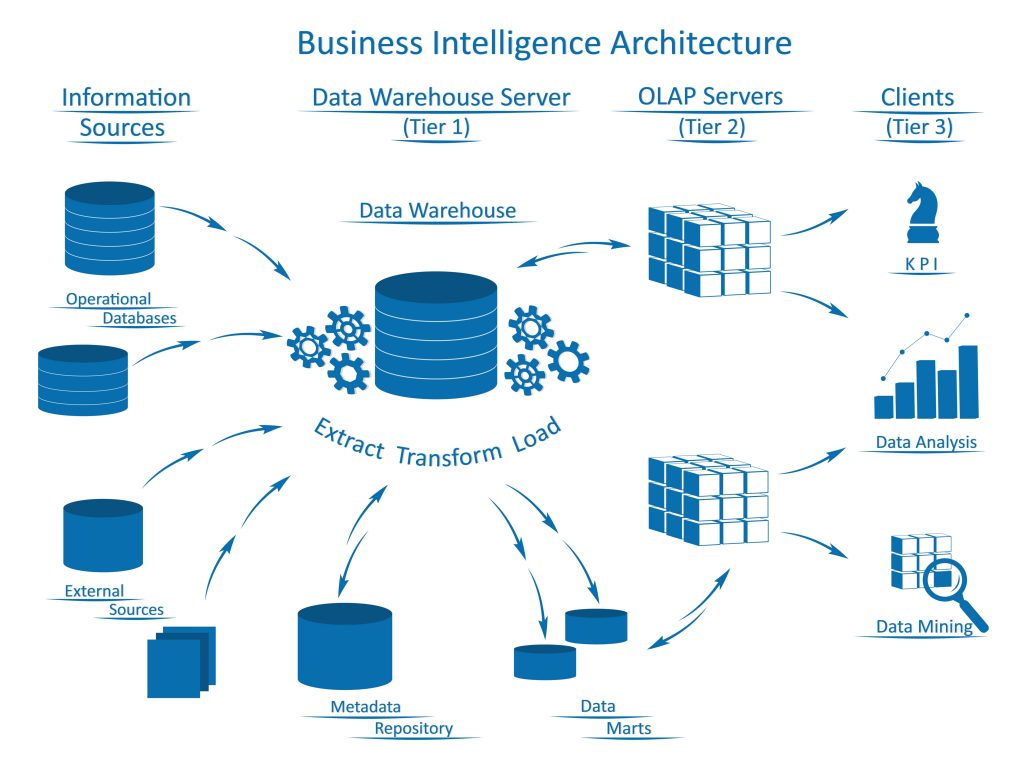
Data Warehouse
Data warehouse is a repository that collects data from various data sources of an organization and arranges it into a structured format. An ideal data warehouse set up will extract, organize, and aggregate data for efficient comparison and analysis. Data warehouse supports organizations in reporting and data analysis by analyzing their current and historical data. This makes it a core component of Business Intelligence.
Unlike a database, that stores data within, at a fully normalized or third normal form (3NF), a data warehouse keeps the data in a denormalized form. It means that data is converted to 2NF from 3NF and hence, is called Big Data.
Key benefits of a Data Warehouse
- Combine data from heterogeneous systems
- Optimized for decision support applications
- Storage of historical and current data
Why We Need Data Warehouse for Business Intelligence?
Before the business intelligence approach came into use, companies used to analyze their business operations using decision support applications connected to their Online Transaction Systems (OLTP). Queries or reports were retrieved directly from these systems.
However, this approach was not ideal due to:
- Quality issues
- Reports and queries were affecting business transaction performance
- Data resides in heterogeneous sources
- Non-availability of historical data
- Non-availability of data in the exact form required for reporting
Connecting your organization’s business intelligence tools to a data warehouse can provide you benefits in terms of production, transportation, and sale of products.
Data Visualization vs. Data Analytics – What’s the Difference?
Data Warehousing and Business Intelligence Using AWS
Today, traditional BI has given way to agile BI where agile software development accelerates business intelligence for faster results and more adaptability. Big Data is growing fast to provide useful insights for making improved business decisions.
There has been a paradigm shift in data storage with warehousing solutions moving increasingly to the cloud. Amazon Redshift, for instance, is one of the most popular cloud services from Amazon Web Services (AWS). Redshift is a fully-managed analytical data warehouse on cloud, that can handle petabyte-scale data, which enables analysts to process queries in seconds.
Redshift offers several advantages over traditional data warehouses. It provides high scalability using Amazon’s cloud infrastructure to set-up and for maintenance, without the need for upfront payments. You can either add nodes to a Redshift cluster or create additional Redshift clusters to support your scalability needs.
You can use AWS Marketplace ISV Solutions for Data Visualization, Reporting, and Analysis.
Data visualization helps you identify areas that need attention or improvement, clarify factors that influence business such as customer behavior, and making decisions such as finding out a suitable market for your product or predicting your sales volumes, and much more.
TIBCO Jaspersoft, for example, is a solution that delivers embedded BI, production reporting, and self-service reporting for your Amazon data at affordable rates. It features the ability to auto-detect and quickly connect to Amazon RDS and Amazon Redshift. Jaspersoft is available in the AWS Marketplace in both single-tenant and multi-tenant versions. TIBCO Jaspersoft for AWS includes the ability to launch in a high availability cluster (HA) as well as with Amazon RDS as a fault-tolerant repository. Pricing is based on the Amazon EC2 instance, type as well as the chosen single or multi-tenant mode.
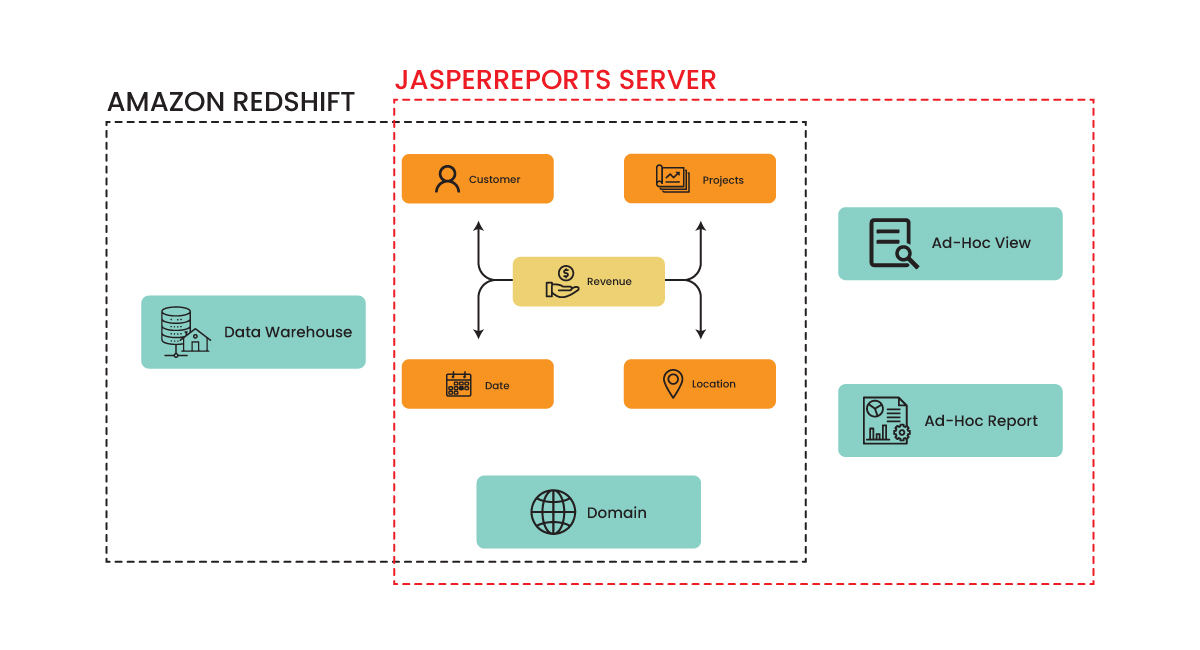 Image source: http://bit.ly/2IWWCDn
Image source: http://bit.ly/2IWWCDn
Summary
By moving your analytics and business intelligence to a hybrid cloud architecture you will be able to handle huge amounts of data and scale at the rate of expansion required by your business. You will also be able to deliver information and solutions at the speed that your employees and customers demand, and gain insights that will enable your organization to innovate faster than ever.
Business Intelligence and Data Warehousing are two important aspects of the survival of any business. These technologies give accurate, comprehensive, integrated, and up-to-date information on the current enterprise scenario which allows you to take the required steps and make crucial decisions for your company’s growth. To know how your business can benefit from the latest technologies, get in touch with our experts today
Stay up to date on what's new

Featured Blogs
Stay up to date on
what's new



Talk To Our Experts
How Chat Bots Can Enhance Student Onboarding
Conversational interfaces have gone mainstream. The technology behind keeps crossing new milestones, the result of which chatbots have transformed from simple Q&A systems to intelligent personal assistants. As a result, bots found widespread application in diverse areas, most recently in education.
Although education stayed backward in terms of technology adoption, lately it took on a renewed quest to incorporate it. Educators are on the lookout for innovative ed-tech systems for efficient tutoring and students increasingly prefer personalized learning environments.
Deploying chatbots at numerous front-ends like college/university websites, internal student communication portals or even popular instant messaging platforms can help with that. Here’s how?
Chatbots bring in a personalized and engaging learning experience optimized to the learning pace of each learner, which actively drives student-centered learning at the forefront. Configuring a bot to answer student inquiries related to curriculum, courses, admissions, etc. as well as deliver learning resources on request makes way for a personal always available assistant that every student can engage with.
That’s exactly what we did, though in a different way.
Recently Fingent was approached by a client, a leading public research university based in Australia to develop an intelligent chatbot for assisting prospective and freshly enrolled candidates with onboarding and orientation, course-related information, credit scores, etc. The client wanted to streamline its entire student orientation process using a chatbot and make all related information better accessible and context-based as well as systematically tackle the ‘summer melt’ rates.
Here, we lay down a high-level abstract of this chatbot development experience powered by IBM Watson Assistant and backed by .NET Core. It briefs various facets and challenges faced during the design and development of the system.
The Plot (Objective)
“Build a chatbot to assist candidates during the orientation process of Monash University. The chatbot should be capable of handling different context-based scenarios such as listing available courses, providing credit score information, course structure, projects associated with each course and many more.“
Since it is a Proof of Concept (POC) project, and Monash University offers a wide range of courses based on various areas of education, the team decided to choose one particular area and focus on only two of the selected courses (Bachelor of Accounting & Bachelor of Actuarial Science). This is to repress the scope in control, considering the timespan and resource availability.
Foundation
Keeping in mind the idea of building a highly sophisticated chatbot, an ideal and matured chatbot assistant technology had to be finalized, which provides both comprehensive user intent identification and processing as well as a satisfactory response according to the user query. The system should also provide an extensive and less technicality included training interface. The hunt for such a tech ended up in IBM Watson Assistant.
Terminologies
The world of chatbots has some common terms which are essential key knowledge required while developing a chatbot. We can call them as the pillars of a chatbot.
- #Intent – Intent is nothing but the user’s intention in a query – basically covers all types of questions and their varieties, the user probably may ask. This can be queries within the scope or related to the scope.
Examples:
“What are all the courses available?”
– Intent associated: #KnowCourseInfo
“How much credit I require in the first semester?”
– Intent associated: #KnowCreditInfo
Remarks – There will be some stock #intent collection depending upon the chatbot engine, which is designed to handle the general greetings and conversation-oriented chunks. We can import or enable the intents as we want to make our chatbot more conversational and human-friendly.
- @Entity – An entity is a subject addressed in the user query. There are mainly two categories of entities. They are Scope-based entities and System entities. Scope-based entities are entities that belong to the scope we address whereas System entities are “primitive system-aware” entities.
Examples:
“What are all the courses available?”
– Entities associated: @Course
“How much credit I require in the 1st semester?”
– Entities associated: @Credit, @Semester, @system_number:1st
Remarks – On diving deeper, we may need the support of multiple types of scope-based entities and a system-aware way of specifying the relationship between the entities (which lacks in IBM Watson Assistant). This is to specify the entity characteristics as more descriptive as well as with the notion of “the system knows” the given attributes and relationships of an entity.
- Dialog – A dialog is a declarative way of specifying the possible questions the user may ask, and how should the bot respond to the corresponding questions. Generally, this will be a tree-based structure, rooted in the key user intentions and scope covered features. We will be handling the different scenarios of a single #intent as well as the edge cases.
- $Context Variable – A context variable is to store information, collecting from a dialog context or it can be any information related to the dialog context. It helps us to keep the dialogue context and facilitates conversational flow.
- Skill/Workspace (IBM Watson based) – A skill is a package that consists of the above-mentioned factors, in which all are aligned into a single chatbot capability, in our case, it was Onboarding skill.
Implementation
The entire development process streamlined into two major sections. The first one is aligned to the chatbot engine intelligence building and improvement activities while the other one is for the middleware and UI development.
1. Intelligence Build-up on top of IBM Watson Assistant
- Analyzed the requirements and fixed the boundaries of the scope. It includes what all are the functional areas to be covered by the proposed chatbots.
- Prepared the possible user queries and categorized them as #intents.
- Identified the underlying @entities in each question and classified them to form the actual set of primitive entities.
- Designed the dialog structure based on the prepared user query sets. See the resources: Intent structure and Dialogue flow.
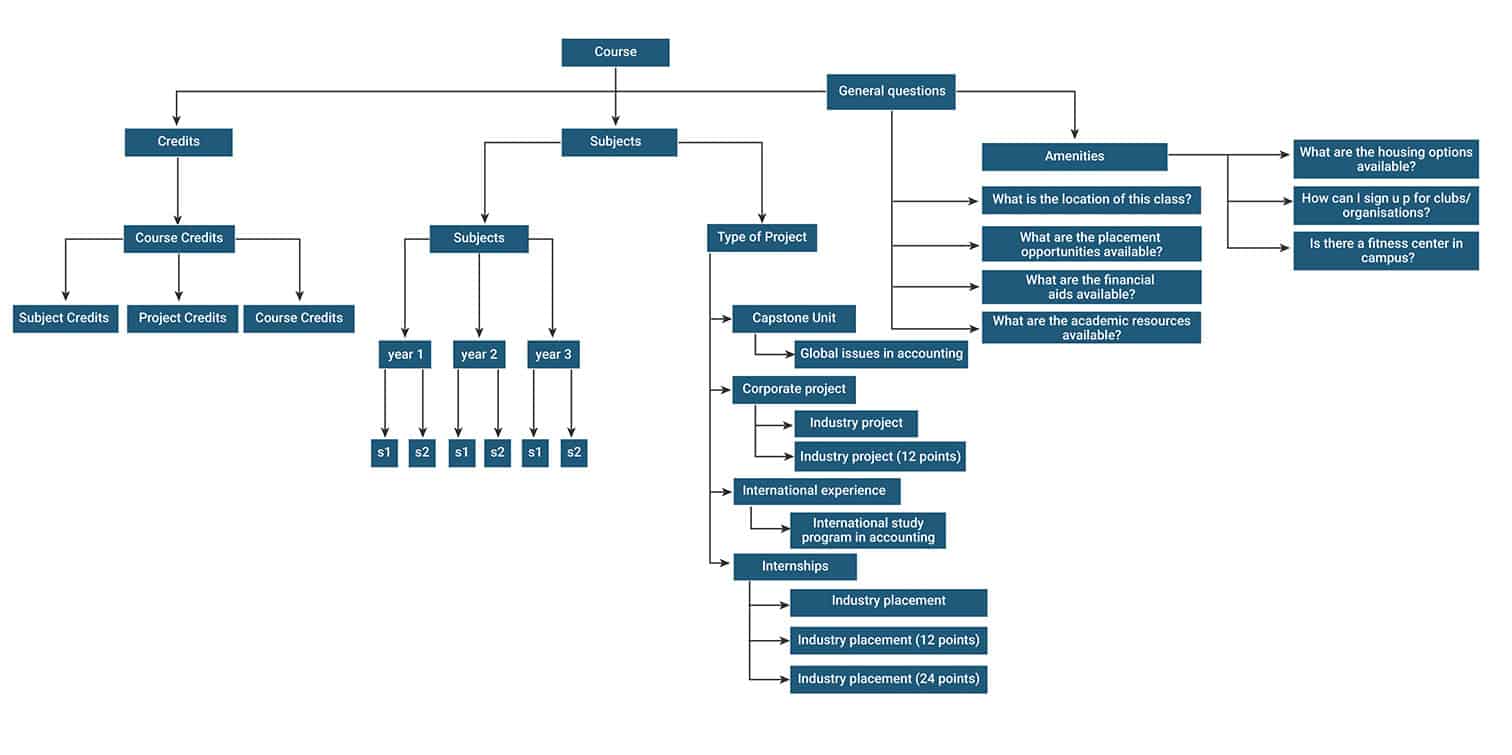
Fig 1. Intent Structure
- Continuously refined the dialogue structure based on detecting each edge cases and to incorporate new scenarios.
- Used some conventions on responses to extend the chatbot response capabilities, according to the requirements. This is to handle specific use cases such as clickable action list image response, map response, and show a list of items.
- Implemented WebHooks (IBM Watson based) to talk to external APIs to fetch the values for a dialogue node as well as validating user input (Not a comprehensive solution).
2. Middleware and UI Development
- Built a middleware backed by .NET Core with an intention to plug any chatbot service to the UI module. In fact, it is designed as a standard-framework to separate the chatbot logic from the application logic. This enables hassle-free maintenance of the app logic, code reusability, and extensibility.
- Built the UI using Angular to provide a sophisticated face for our chatbots.

Fig 2. Dayton Interface
Also, we built a diagnostics module, as part of the UI, which provides the service configuration information and session-based transcripts of conversations held with the chatbot.

Fig 3. The architecture of the Chatbot Middleware Application, Source Code
Challenges
During the development, we came across some development challenges with IBM Watson, which are listed below.
- Unable to map relationships between entities. Due to this limitation, we were unable to link and pull the related values of the entities.
- Conflicts between various entity values (Solved partially via entity split-up method)
- API Limitations to manage chatbots dialog schema
- IBM Watson doesn’t provide active learning, the self-learning capability to learn from user conversation sessions.
- It also doesn’t provide an efficient way to talk to external APIs. Only one external API can be called, which leads to a bottle-neck on executing the webhook actions.
- No built-in user input validation. This has to be done via WebHooks.
Capitalizing on AI Chatbots Will Redefine Your Business: Here’s How
Final Words
The application is now in a showcase/UAT (User Acceptance Testing) mode, also the refinement process being in progress. It has miles to go to reach the capability to converse with the user as a comprehensive onboarding assistant.
To know how chatbots can enhance your business growth, get in touch with our experts today!
Stay up to date on what's new

Featured Blogs
Stay up to date on
what's new



Talk To Our Experts
Mixed Reality Promising a New Improved Healthcare Industry
Mixed Reality makes it possible for surgeons to perform an operation on a patient thousands of miles away. It makes it possible for nurses to hone their skills and perform hundreds of operations virtually before even touching a patient. Mixed Reality is making the impossible possible.
Mixed Reality combines the real world with the virtual to create solutions that we never thought possible. It enables effective collaboration between physical and digital objects and has found an integral place and application in healthcare. This blog explores some radical ways in which healthcare is using Mixed Reality for better quality treatment and customer experience.
Mixed Reality Working Wonders in Healthcare
By 2026, AV/VR in the healthcare market is expected to reach 7.05 billion USD showing that Mixed Reality is finding increased application in the healthcare industry. From enabling pre-procedural planning and visualization before surgery to training nurses as they virtually workout challenges they could encounter during real-life procedures, and improving the collaboration and communication between doctors and patients – Mixed Reality is making great things happen. Here are some ways in which this is becoming possible.
1. Immersive Learning for Nurses and Medical Students
Skilled nurses are critical to the healthcare industry. Simulations are the most effective method of educating and preparing nurses to respond appropriately to a variety of situations they might encounter. Mixed Reality can place a nursing student in those specific or rare situations, which may be difficult to arrange for in real clinical settings. Such immersive simulations are much more cost-effective than traditional nursing simulation devices. The education company Pearson has collaborated with Microsoft to launch apps called HoloPatient and HoloHuman. These tools use holograms of patients and help in training healthcare professionals as they diagnose and treat medical problems.
As another achievement in Mixed Reality, St. George’s University in Grenada worked with SphereGen Technologies to develop what is called the ‘Learning Heart.’ The Learning Heart is a study aid that enables users to view the hologram of the heart from all directions and examine its functions. It responds to touch and voice commands and allows users to separate all the parts of the human heart, thus making learning immersive for medical students.
2. Reduced Time and Reduced Human Error in Reconstructive Surgery
Reconstructive surgeries enabled by Mixed Reality with the use of HoloLens have proven to be very successful at the Imperial College at St. Mary’s Hospital, London. According to the team guided by Dr. Philip Pratt, Mixed Reality helps surgeons locate and reconnect major blood vessels. With HoloLens, surgeons are able to use holographic overlays to see the bones and identify the course of blood vessels which aids them in their surgery, improving the outcome for the patient. An article in The Times entitled Holograms to get surgeons under the skin of patients showed examples of a 41-year-old man and an 85-year-old woman on whom such reconstructive surgeries were performed successfully.
3. Revolutionizing Surgery
In December 2017, Dr. Thomas Gregory undertook a live transplant surgery with the help of HoloLens. It helped him access the patient’s medical information and anatomical pictures in 3D during the surgery. Since HoloLens is a standalone computer worn like a helmet by the surgeon, his hands are free for surgery. Additionally, the use of microphones and sensors allows the surgeon to communicate with other surgeons in different parts of the world making collaboration easier. All these features, along with the simulations and information it can pull up, make Mixed Reality a valuable asset in improving surgical performance.
4. Improving the Patient Experience
Building trust through efficient communication is an important aspect of a doctor-patient relationship. Mixed Reality makes this possible in a more immersive way. For example, in a recent interview with Sirko Pelzl, CEO and CTO of apoQlar, he spoke about Virtual Surgery Intelligence (VSI) and said: “physicians can use VSI to show patients their own MRI scans and explain the surgical procedure in visual detail. We were able to illustrate in a recent study how greatly patients appreciated this education and communication.”
Mixed Reality also helps in reducing response time and improving surgical accuracy, which contributes to the smooth and successful patient experience. For example, when the surgery is complicated or the patient is critical, diagnostic images with Mixed Reality can serve as a twin of the patient. This helps doctors discuss, plan, and walk through their treatment protocol, thus reducing response time in patient care.
Mixed Reality also gives doctors all the information they need about a patient and enables real-life simulations to help him in his decisions and actions. Commenting on a prototype application called “Cinematic Rendering for Surgery” Christian Zapf, head of the Syngo Business Line at Siemens Healthineers said, “The error rate dropped from 14.1 to 0.8 percent for surgeons in training and from 11.1 percent to 0.8 percent for qualified surgeons.”
https://www.fingent.com/uk/insights/portfolio/future-communication-security-using-augmented-reality/
The Future of Mixed Reality
Mixed Reality has already made deep inroads, especially in medicine. It will continue to improve the quality of healthcare and medical training as it positively impacts the medical industry. Fingent has helped many clients build custom healthcare software solutions, which integrate applications with the latest technologies like Mixed Reality. Get in touch with us and let’s discuss how we can make Mixed Reality possible for you.
Stay up to date on what's new

Featured Blogs
Stay up to date on
what's new



Talk To Our Experts
Can Augmented Reality Improve Conversion Rates For Businesses?
Augmented Reality (AR) is a powerful tool that brands are using to bridge the gap between their products and their digitally empowered customers. With the power of AR, customers can see and experience their products without actually trying them on, helping them make purchase decisions instantly. AR is being widely used by many brands as the most cost-effective way to convert strangers into customers and promoters.
Let’s consider why and how top brands are embracing Augmented Reality for immersive customer experience.
Top Brands Embracing AR
When AR technology was pioneered by Ivan Sutherland in 1968, he described his concept of the Ultimate Display as: “The ultimate display would, of course, be a room within which the computer can control the existence of matter. A chair displayed in such a room would be good enough to sit in. Handcuffs displayed in such a room would be confining, and a bullet displayed in such a room would be fatal. With appropriate programming, such a display could literally be the Wonderland into which Alice walked.”
Today we are witnessing the massive affect AR is having on immersive customer experience. Wonderland looks close!
Here are a few examples of top brands that are using AR effectively to achieve this.
LEGO Wear’s AR Shop
LEGO Wear’s first limited-edition clothing line for adults was featured on Snapchat with a uniquely designed Snapcode. This virtual cloth store had no clothes on display but allowed customers to shop virtually on a Snap-triggered portal. Studies reveal that Snachatters engage with Augmented Reality naturally on a large basis.
Around 70% of them play with an AR lens every day. So with the combination of AR and e-commerce leading to exciting customer experience, the company was able to drive sales rapidly.
Watch how AR simplify equipment maintainance
This video is made using InVideo.io
Patron Tequila’ s Immersive Distillery Experience
Patron’s AR app is designed for its tech-savvy customer persona. Understanding the mindset of today’s socially connected generation to know more about the products they consume, the Patron AR app allows its customers to take a virtual tour of their distillery in Mexico giving them a glimpse of the history and origins of the distillery.
Speaking about the success story, the app-enabled more than a million consumers to have a memory of visiting Hacienda without even physically going to the place. Also, thousands of people have interacted with a virtual Patrón bartender, who is actually not a real person at all, but a robust data processing tool to simulate a real-world interaction.
Nike Snaps Up Customers
The Air Jordan Brand in collaboration with Snapchat and Darkstore, out together a virtual experience that brought in record sales last year. Using a special 3-D AR world lens of Michael Jordan circa 1988, taking off from the free-throw line in the slam dunk contest, Nike was able to target Snapchat users around the Staples Center where an NBA All-Star Game was taking place.
Users could walk around the lens and see Jordan changing into the All-Star uniform and the new AJ III Tinkers. In the following event, Snapchat brought out a QR code that users could use to buy the shoes from the Snap Store. The shoes would be delivered within 2 hours. The shoes sold out in 23 minutes!
MAC Cosmetic’s AR-enabled Video Tutorial
In June of this year, MAC cosmetics launched AR-enabled shoppable video tutorials on YouTube in partnership with the beauty influencer, Roxette Arisa. As the tutorial is playing, a ‘try on’ button appears below the video, allowing viewers to try on different shades of lipstick as they continue to watch the tutorial.
Once they have made a choice, they can order the lipstick without leaving the app. MAC sees a huge potential in this as beauty-related content generated more than 169 billion views on YouTube last year.
Speedo’s Customers Try It On Virtually
Early this September, leading swim gear company Speedo launched a mobile app that lets their customers try out their goggles before they buy it. This app is compatible with both Android and iOS phones. Commenting on this feature, Pentland Brand’s head of innovation Ben Hardman said, “This technology will undoubtedly enhance our customers’ shopping experiences by allowing them to interact with the product before they make a purchase. In this instance, it helps them address a well-documented human pain point: leaky goggles.”
AR Is the Future – Are You Ready?
AR technology is working wonders for the sales and productivity of many brands. It is improving its business operations while giving their customers a more immersive and fun experience. Brands are able to market their products in fresh and interesting ways and are seeing great returns.
Fingent works with brands to achieve this for their business. By using AR technology like Microsoft HoloLens and more, we are making AR possible for our clients.
Reach out to us and know how Augmented Reality technology can be used to improve your customers’ experience and scale your business.
Stay up to date on what's new

Featured Blogs
Stay up to date on
what's new



Talk To Our Experts
Can Empowering AI and IoT Bring In Competitive Advantage To Industries?
It takes more than forward-thinking employees to gather customer purchasing trends and improve the customer experience. International companies depend on Artificial Intelligence (AI) and the Internet of Things (IoT) to drive data and forecast the next big wave of trends.
Studies predict Asia and North America to lead in the innovation of AI and IoT. Also, embedded AI in support of IoT smart objects will reach $4.6B globally by 2024.
Major vendors of IoT platforms such as IBM, Amazon, and Microsoft have started offering integrated AI capabilities like ML-based analytics. Scalable digital platforms are designed daily to understand the way customers think while using predictive maintenance in real estate, eCommerce, healthcare, and other industries.
It’s time for us to share the leading examples of how businesses use AI and IoT, and how these technologies benefit them.
AI and IoT: Leading Use Cases
Smart Cities: Making Life Easier
What happens when AI and IoT run a city? It turns into a smart city. Smart city technology can solve an energy crisis, help manage traffic, or improve the healthcare experience.
One example of a smart city is the use of Advanced Transportation Controller technology linked to a 5G network in Los Angeles. There are road-surface sensors throughout the city, and cameras that monitor traffic, sending information to traffic management systems. Municipal employees can now analyze the data of traffic congestion and issues with traffic lights in high traffic areas. Overall, this improves the quality of living in Los Angeles and helps a business run smoothly without delays.
Convenience in Property Management
One of Fingent’s clients WRI Property Management, a US-based single-family rental provider with 10,000+ leased properties and 20,000+ managed houses experienced many challenges. Here are a few of the issues WRI Property Management faced:
- Tenant eviction
- Rent collection/accounting
- Scheduling property inspections
- Leasing properties
- Screening tenants
What happened next? Fingent introduced an advanced software platform, Honey Badger. The AI and IoT technology-supported WRI managers to conveniently communicate with multiple parties, renovating properties, view lives auction feed, track the construction of new properties, etc.
5G Network Vehicle Safety and Security
Machine Learning technology is improving the autonomous vehicle experience. How does it work? An automobile can stop when a driver is in dangerous tragic weather or unexpected situation.
The 5G network can cause the brakes of a car to operate by tracking vehicle sensors of other drivers near prevent or relieve car crashes.
The network can also send drivers a traffic update to use detours and avoid certain roads that are under construction or is unsafe.
AI and IoT Business Benefits
1. Guaranteed Security and Safety
A company’s highest priority is protecting data in the workplace. As Artificial Intelligence scans security footage, IoT can close gates or doors if an intruder attempts to enter the premises of a head office.
Organizations are now using machine-to-machine communication to determine potential security threats with an automated response to hackers or intruders.
An example of AI and IoT in banking security is the detection of fraudulent activity in ATMs to communicate updates to law enforcement to protect customers.
The unexpected workplace accidents can be prevented by using sensors that monitor safety hazards as employees work. Employees at some organizations now wear wearable devices that alert the management of undetected dangers such as carbon monoxide released into the air on a work site.
2. Convenient Shopping Automated Experience
Online shopping is more convenient than ever as websites personalize real-time suggestions to consumers based on a customer’s shopping history. As a result of this investment, Kinsta predicts that by 2021, Artificial Intelligence in e-commerce will increase sales to $4.5 billion from $2.3 billion in 2017.
3. Enhanced Healthcare Experience
NovitaCare, a Netherlands based healthcare company that treats patients with chronic and multiple disorders, wanted to improve the caregiver experience using an effective online platform.
With Fingent’s help, NovitaCare now can communicate with non-profit organizations, patients, providers and researchers with an online platform that is HIPPA compliant.
4. Simplified Management Of Supply Chain
The supply chain industry has experienced challenges in managing unexpected events that happen due to inaccurate forecasting. A solution to the problem is implementing AI and IoT.
Supply Chain Digital recently stated the following about these technologies:
“Intel highlights that the world of IoT is growing rapidly, from 2 billion objects in 2006 to a projected 200 billion by 2020.”
“AI is on most companies’ radars, with 78% of organizations implementing it to enhance operational efficiency by at least 10%.”
The use of real-time devices will feed data to executives to help create contingency plans for preventing unexpected challenges in the industry. As a result, the supply chain and a company’s reputation can experience fewer impacts.
How Fingent Helps Businesses Achieve Success With AI and IoT?
Fingent has mastered the art of technology infrastructure to help companies resolve AI and IoT processes. As a result, it creates efficiencies in managing smart devices.
Implementing these technologies are small changes that can have a huge impact on your business. The ability to use raw data to understand customer behavior and forecast trends in the market can improve customer loyalty. Also, companies can track employees working in multiple departments and locations across the globe by partnering with Fingent.
Fingent is confident that AI and IoT work in your business context by delivering technologies to enable solutions in the cloud, networks and gateways, heterogeneous device support, systems capabilities, and data analytics.
To Conclude
Business Insider predicts that there “will be more than 64 billion IoT devices by 2025, up from about 10 billion in 2018.”
Gartner observes that in three years (by 2020), more than 80 percent of enterprise IoT projects will incorporate at least one AI component. Artificial Intelligence and the Internet of Things is used to improve the safety of drivers on the road, enhance healthcare experiences, automate and streamline enterprise processes, stop intruders from hacking into IT systems or large organizations, and in numerous other ways.
The combination of these technologies not only delivers a superior customer experience, but also forecasts what customers want in real-time, improves their experience of living in smart cities, maintains a high safety rating in challenging workplaces, and reinforces physical and cybersecurity. AI-IoT duo also avoids any unplanned downtime, increases operating efficiency, helps develop new products and services, and improves your risk management.
Are you looking for an AI and IoT partner? Get in touch with Fingent experts today for a streamlined and error-free IoT implementation for your business.
Stay up to date on what's new

Featured Blogs
Stay up to date on
what's new



Talk To Our Experts
How Logistics Companies Can Gain Competitive Advantage with Customized Software Solutions?
Fluctuating consumer demands, increasing client requirements, and complex business models are posing critical challenges for logistics companies today. According to predictions made earlier this year, two major drawbacks are to be witnessed in the industry.
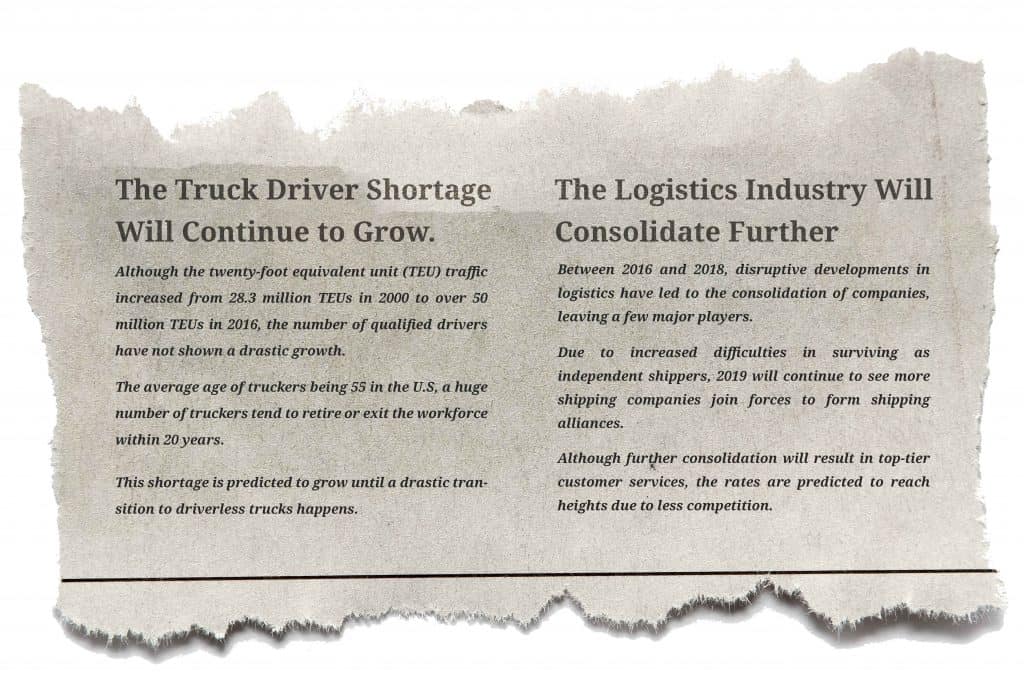
With drastic changes hovering over the logistics industry, the players are bound to stay equipped with the emerging technology trends, or they might get caught off guard. While its turning imperative for logistics companies to transform with smarter technologies, the question of whether to choose a custom software or an off-the-shelf package still lingers in many minds.
Why Choosing Customized Solutions Over Packaged Software Considered Profitable In Logistics?
Purchasing an off-the-shelf software would sound comparatively simple, stress-free and time-effective. But in the long run, it’s always a custom-built solution that pays off.
Most packaged logistics software, although sophisticated and deployed of disruptive technologies, pose standard solutions for the industry as a whole. Of course, they solve the major supply chain hassles. But with every business, possessing unique procedures, workflows, and objectives, “not everyone fits the same mold”.
So what happens when you choose a packaged software solution for your logistics business?
1. A packaged software often comes with hordes of features. This sure sounds exciting at the beginning. But when you have to pay for more than you use, it sure isn’t a happy moment! Off-the-shelf software solutions are often crafted considering the large players of the industry. Their features focus on resolving the common challenges faced by these companies.
However, in a complex industry like logistics, it’s not always necessary for every company to face the same kind of issue. Hence, with packaged software being available as a whole for a single price, businesses usually end up wasting money on features they do not need.
2. Off-the-shelf logistics software utilizes the latest and advanced technologies to cater to the complexities of an industry. But however, at times these sophisticated technologies complexes situations even further. For companies with basic knowledge on latest technologies, would definitely find it difficult to carry out operations successfully with a sophisticated system.
Moreover, they would have to spend extra time and money on training staff, which is not reasonable in a highly competitive industry like logistics. As mentioned before, with plenty of features, packaged solutions often prove to be less user-friendly and more complicated.
3. Although packaged solutions solve a list of logistics hurdles, their features might not provide a complete automated solution. You might find a good Transportation Management System (TMS) that enables real-time tracking and automated reporting, but you might still have to communicate with your customers, and assigned drivers manually.
Also, an efficient packaged TMS system might have an integrated warehousing management system, but might not facilitate an appropriate billing system, leaving the need to adopt alternate transaction processing systems. Hence, in a nutshell, complete automation is often unattainable with packaged software solutions.
4. The most eminent reason to not opt for a packaged solution is that they are rigid. There is hardly any packaged software company that allows customization. It’s not only rare to find a packaged software that caters to all your business-specific needs, but it also proves to be non-scalable in the long run.
Growth in your business and changes in the market will bring about an increase in your technology requirements. This will result in the need for a solution that can be customized with your growing business necessities.
Customized logistics software eliminates all the above-mentioned drawbacks of a packaged solution. Plus, it always comes with continuous technical assistance to simplify the technology transition in your company.
Let’s take a quick look at how a customized Transportation Management System can help you battle logistics challenges better.
Digital Transformation of a Logistics and Supply Chain Company – A Client Success Story
How A Customized TMS Can Enhance Your Supply Chain Efficiency?
Investing in a customized TMS can enable you to create an Uber-like platform for your logistics business. Integrating the latest in web and mobile application solutions, you can create a platform that completely streamlines your driver, client, and cash-flow management.
Enabling centralized data management, transparent billing, delivery match capabilities, along with real-time monitoring and customer insights capturing; a customized software solution can be framed to automate your entire end-to-end logistics operations.
A custom-built mobile application can further enhance productivity with less paperwork, better transparency, easy communication, and improved customer engagement. Implementing a customized solution would also let you add in innovative features that help you automate critical tasks, improve team collaboration, and increase your overall company efficiencies.
Here is a shortlist of benefits that you can acquire with customized logistic software.
1. A customized software solution gives the advantage of integrating with smarter technologies to simplify the minute challenges faced by the industry. For instance, along with assigning and managing truck drivers, a logistics company also faces difficulties in maintaining and verifying driver documents. Integrating with smart apps like Camscanner can simplify these documentation verification complexities.
2. A logistics company with varying client needs might often find difficulties in choosing apt carriers for a given order. A customized solution gives you the benefit to add in features that simplifies such decision making by suggesting the best available carriers for the orders.
3. Although packaged solutions streamline drivers assignment and management, yet they blackout on some eminent functions that logistics companies struggle to maintain. For example, calculating the detention hours/rates of the drivers are likely the most critical task of a logistics company. Through a customized logistics software you can straighten such bends of the industry.
4. With customized logistics software, a logistic company can embrace a completely streamlined and user-friendly accounting system that generates automated invoices as well as tracks any misleads or accounting errors.
Customized logistics software can simplify your logistics operations more than you can imagine. If you are looking for a tech partner to help you add in these features and more to your logistics software, then you have landed on the right page.
Fingent is one of the leading custom software companies providing advanced and user-friendly web and mobile technology solutions for logistics businesses worldwide. Contact us today to know how our custom software solutions can enhance your business abilities.
Stay up to date on what's new

Featured Blogs
Stay up to date on
what's new



Talk To Our Experts
What Is Robotic Process Automation?
Robotic Process Automation is the process of applying automation to perform tedious business tasks of the workforce, such as data manipulation, response triggering, transaction processing, and other redundant tasks. According to a recent study by Snaplogic, 90% of the workforce are burdened with redundant tasks. This not only reduces their productivity but also consumes significant amounts of time with which they could perform higher-value tasks.
The Role Of RPA: Features That Enhance Business Process
Once your enterprise has decided to implement RPA, it is time for you to choose the right robotic process automation solution.
Traditional RPA software bots are known to handle only a specific task at a given time. When it comes to addressing high volumes, there is a necessity to clone these bots and run them simultaneously. RPA providers usually charge users for each concurrent process. This can become a costly affair for enterprises, especially during volume spikes. Thus, undue extra costs are a key factor to consider while choosing an RPA solution for your business.
RPA works as a virtual assistant and can handle complex processes starting from performing complicated calculations, data capturing to maintaining records.
In addition to prioritized work queues, user-friendly features, data analytics, and non-disruptive nature, the following are crucial features that enhance business processes:
- Non-disruptive nature: An enterprise can easily implement RPA into their workflows without having to disrupt or change the existing structure or risks.
- Data analytics: Gathering critical data from multiple sources, analyzing and storing the data, and creating reports have brought digital transformation to businesses with RPA. This enables accurate forecasts of sales data along with other Key Performance Indicators (KPIs).
- Prioritization of Internal Work Queues: Every RPA software consists of internal work queues. These work queues are used to extract data derived from various transactions for analysis. The extracted data is then stored on a cloud server and made available for access by the bots.
- User-friendliness: Employees can operate on the robots without any extra RPA knowledge. They only need to learn how the systems work.
- Scalability: With RPA, it is possible to upscale and downscale various robotic operations.
Related Reading: Learn more about how Robotic Process Automation is revolutionizing industries.
Types Of Robotic Process Automation Tools
RPA enhances robotic performance in different ways. The three major categories include Working Robots that are commonly used for Data Collection and Project Planning. Monitoring Robots detect faults and breakdowns, whereas Screen Scraping Robots provide data migration tasks for enterprises.
Robotic Process Automation tools come in varying sizes and shapes. Analyzing your business objectives is the most critical factor before deciding to choose a specific RPA tool for your business. A few of the major RPA tools are as follows:
- Attended Or Robotic Desktop Automation Tools
This type of automation always starts with the user via the user’s desktop. The user first launches the RPA code to perform required operations rather than waiting for the workforce to perform.
- Unattended Automation Tools
This type of automation completes business processes in the background and is used mainly to perform back-end tasks.
- Hybrid Automation Tools
This type of automation combines both attended and unattended automation tools to perform start to end operations.
Related Reading: You might like to read more about ways to empower RPA for enhanced business growth.
How To Choose The Right RPA For Your Business
A clear set of objectives form the primary goal before opting a specific RPA tool for your business. The following are the key factors you need to consider before selecting an RPA tool for your business:
1. Easy-to-use Interface
Simple user experience is a major criterion for choosing the right RPA tool for your business processes. A simple user interface will ensure all employees work efficiently.
2. Proper Deployment
An RPA tool that can be quickly deployed with the existing technology stack is what is required.
3. Cost
Replacing tedious tasks performed by the human workforce is largely replaced by the bots. This process of automation saves costs. Employees can focus on their core tasks and spend time and effort on their skills rather than performing redundant and tedious tasks with the help of RPA tools. Purchasing an RPA software tool involves associated costs, such as cost of individual licenses, cost of the software, and other overheads.
4. Scalability
Implementing an effective RPA tool enhances the business processes and leads to the growth of the enterprise. This growth is accompanied by hiring more resources. Thus an RPA tool can enhance the scalability of a business in the long run.
5. Security
Data analytics, compliance, and financial transactions require a highly secure environment. A great RPA software tool ensures a secure solution for all business processes and updates as well.
6. Architecture
The architecture of the RPA depends on where you plan on employing your RPA tool. The deployment and maintenance of an RPA tool depend on factors such as layered design, component reusability, robust delivery, popular language support system, easy accessibility, and so on.
7. Features
Choosing an RPA suite that consists of solid inbuilt features is critical. Flexibility, scope, availability of wizards and GUIs, other extendable commands and supports are some of the features to consider.
8. Exception Handling Support
A robust RPA solution can detect errors during automation and automatically resolve without human assistance. In other cases where human intervention is required, an effective RPA tool must be able to send error messages.
9. Extended Support
Different vendors offer different support. A dedicated support team is necessary to ensure strong maintenance and support.
To make the best decision on choosing the right RPA solution for your business and access the full potential of RPA tools, get in touch with our experts today!
Stay up to date on what's new

Featured Blogs
Stay up to date on
what's new



Talk To Our Experts
How Artificial Intelligence Is Simplifying Business Decision Making?
Technology in 2019 is moving with the speed of light. Immense breakthroughs in the field of deep learning and machine learning have allowed machines to process and analyze information in ways that we could never have imagined.
The role of Artificial Intelligence (AI) is noteworthy in this regard. One definition of AI is that it is “a collective term for computer systems that can sense their environment, think, learn, and take action in response to what they are sensing and their objectives.” This makes it a powerful tool, which when used the right way can radicalize decision making and completely changes the way we do business. This article discusses how AI achieves that.
AI – A Boon to Business
AI includes the automation of cognitive and physical tasks. It helps people perform tasks faster and better and make better decisions. It enables the automation of decision making without human intervention. AI can enhance automation thus reducing intensive human labor and tedious tasks. There are many more ways in which AI is making a difference. With smart weather forecasting, for example, AI is bridging the gap between data scientists and climate scientists. This gives companies the opportunity to fight disaster with algorithms.
The world is about to witness a great impact of AI on the economy and humans. According to McKinsey Global Institute’s research, AI could deliver an additional output of $13 trillion to the world economy by 2030, which would boost global GDP by nearly 1.2 percent a year. Acting as a capital-hybrid, AI can aid the growth of both the economy and humans. It will definitely have a revolutionary impact on the decision-making process.
AI the Game Changer
From tarot cards to time machines and more, the quest of man to know the future has been relentless. The ability to make decisions based on a knowledge of the outcome is no more fantasy, however. AI has brought this to the realm of reality and has revolutionized business decision making.
In the recent past, we have embraced analytics-driven decision making. Along with ever-increasing data storage and computing power, AI has the potential to augment human intelligence and enable smarter decision-making. AI could eliminate the huge costs of a wrong decision because it can practically eliminate human biases and errors. This could in turn speed up the decision-making process. The focus of the next few points is to highlight the ways in which AI can make a difference in business.
1. Marketing Decision-Making
In today’s customer-driven market complexities involved in decision making is increasing every day. This includes understanding customer needs and desires and aligning products to those needs and desires. A handle on changing customer behavior is vital to make the best marketing decisions.
AI simulation and modeling techniques provide reliable insight into the consumers’ persona. This will help predict consumers’ behavior. Through real-time data gathering, trend analysis and forecasting, an AI system can help businesses make insightful marketing decisions.
2. CRM
Organizations can identify a consumer’s lifetime value with the help of AI’s buyer persona modeling. It can help organizations manage multiple inputs. During a complex decision-making process, AI can efficiently manage and control different factors at the same point in time. It can source and process large amounts of data within minutes while providing valuable business-based insights. While we humans face decision fatigue, algorithms do not have such limitations, which make AI-based decisions faster and better.
3. Recommender System
Recommender system (engine) is a technology that recommends products or other items to users. Although recommendation systems were initially used for music content sites, now it’s used has expanded to various industries. In this, an AI system learns a consumer’s preference based on ‘explicit’ or ‘implicit’ feedbacks. This information can help the organization reduce bounce rate and craft better customer-specific targeted content.
4. Problem Solving
An expert system is a kind of problem-solving software which tries to replicate the knowledge and reasoning methods of the experts. This system uses expert thinking processes to provide data, which includes assessment and recommendations for your problem. This makes it easier to make the right decision and respond swiftly when faced with issues and problems.
5. Opinion Mining
AI has been able to provide reliable insight to decision-makers. For example, in marketing, AI has provided businesses invaluable insight about consumers, which helps them enhance their communication with the consumers. It also helps retailers predict product demand and respond to it quickly.
To that end, opinion mining helps businesses understand why people feel the way they feel. Most often a single customer’s concerns might be common among others. When sufficient opinions are gathered and analyzed correctly, the information gleaned will help organizations gauge and predict the concerns of the silent majority. AI has improved this mining process through automation, which is quicker and more reliable, helping organizations in making critical business decisions.
6. Augmented Analytics
According to a recent press release by Gartner, Augmented Analytics is going to be the next big trend which will transform the way analytics content is advanced, expended and shared. VP analyst at Gartner, Rita Sallam said, “The story of data and analytics keeps evolving, from supporting internal decision making to continuous intelligence, information products and appointing chief data officers.”
Wise business decisions are made when business executives and decision-makers have reliable data and recommendations. AI not only improves the performance of both the individual members of the team but also the competitive edge of the business.
Make Bigger, Faster, Better decisions with AI
Common sense and experience are no longer enough to anticipate the risks and consequences of critical business choices. AI with its varied applications helps businesses make informed and effective decisions which will have a positive impact on their business.
Implementing AI in your business isn’t as tall an order as you may imagine. It can be incorporated with your existing business applications to enhance them and make them invaluable. To learn how your business can avail the best of AI, get in touch with our experts today!
Related Reading: You might also like to take a look at this guide to help you enhance your existing business app with AI.
Stay up to date on what's new

Featured Blogs
Stay up to date on
what's new








